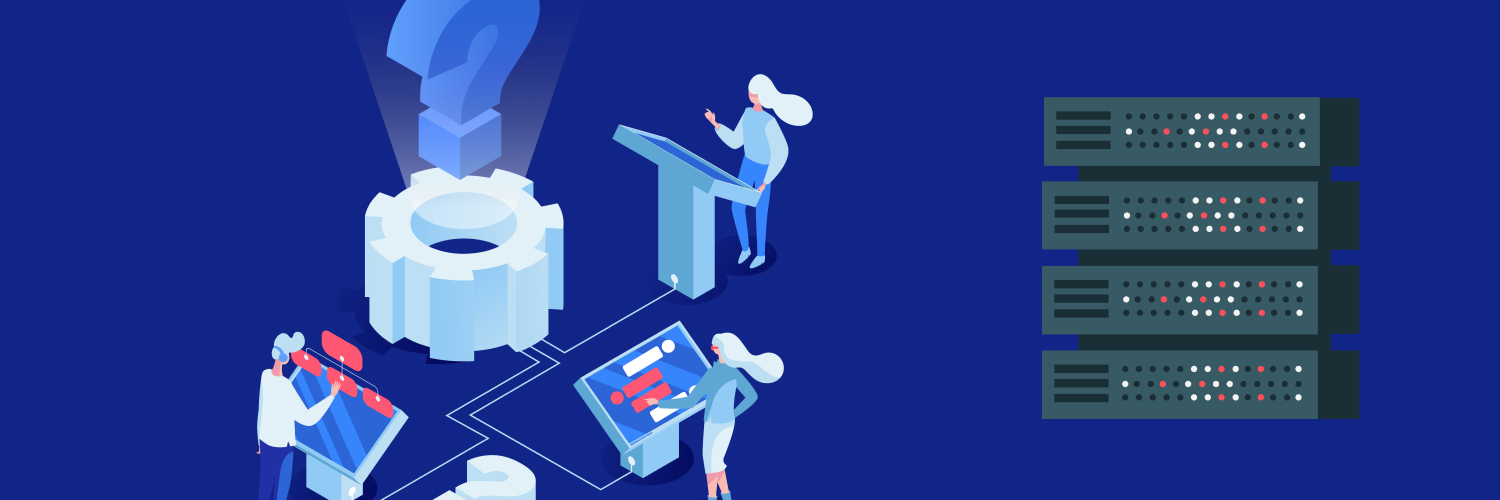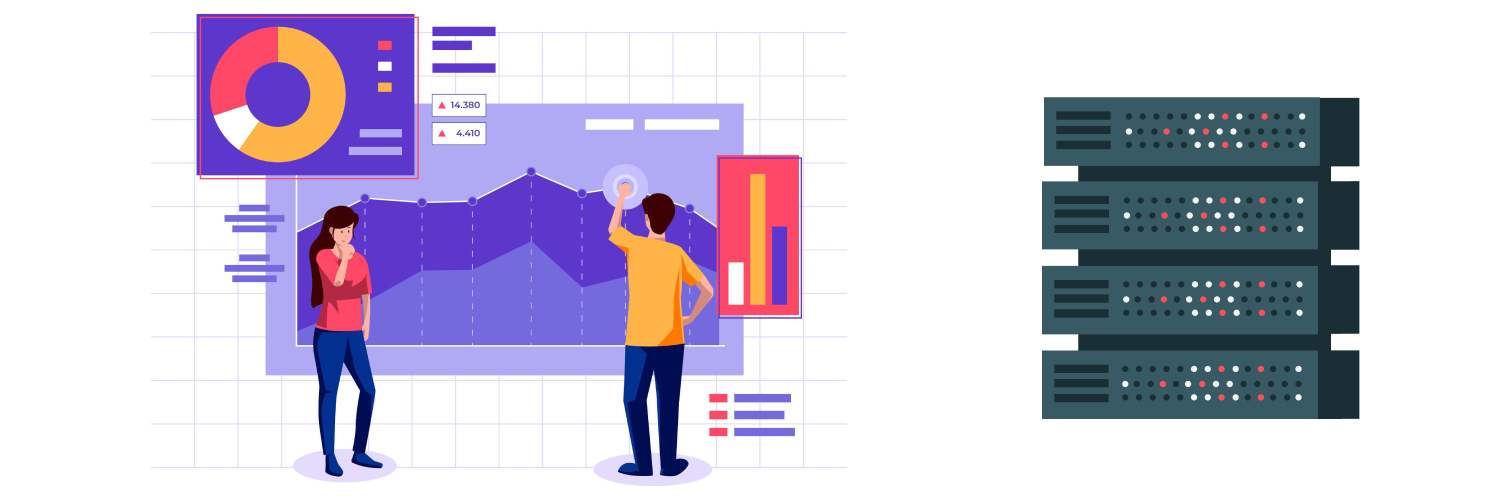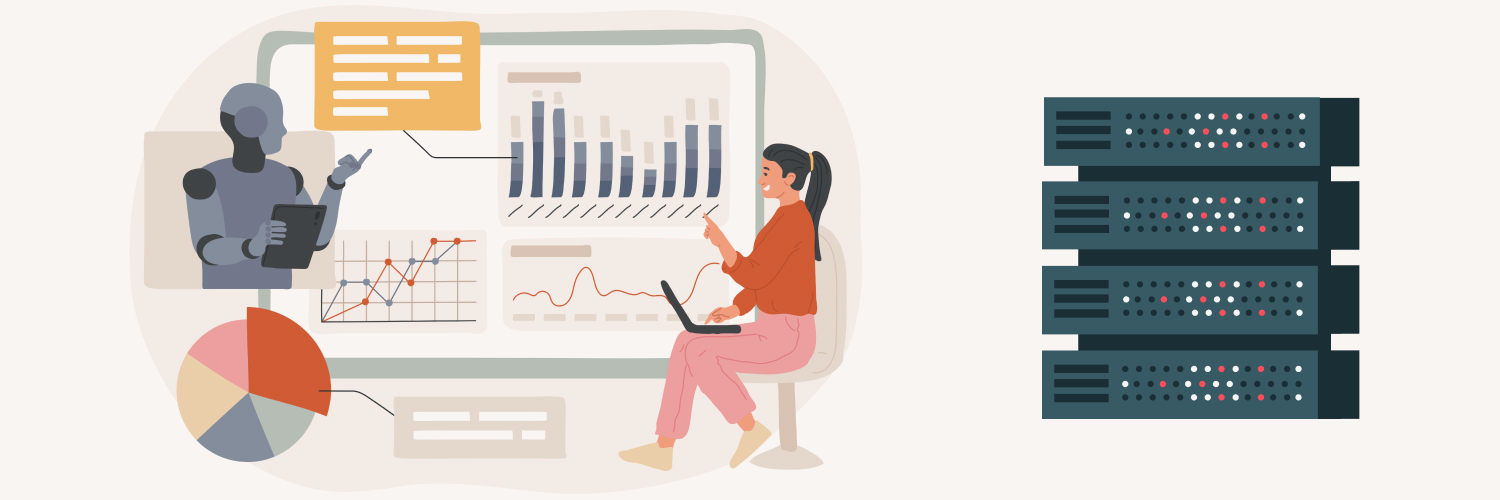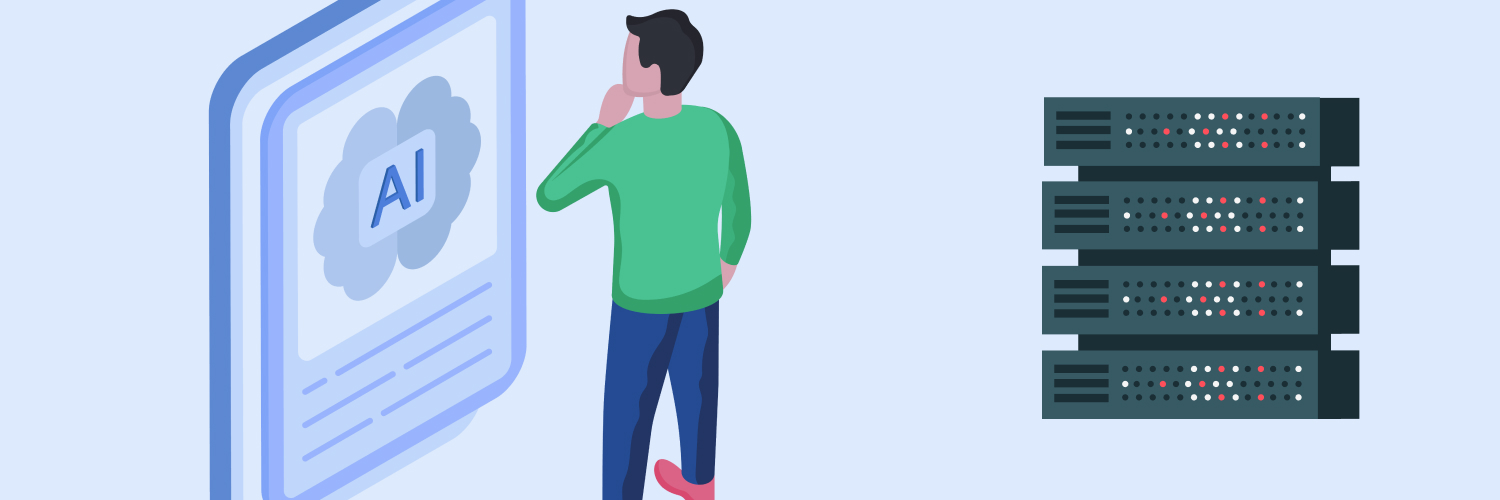The Ultimate Guide to Collecting Customer Data: Everything You Need to Know
The internet is humanity’s biggest and best data repository. Anyone can use the internet to collect information about anything, and businesses are no different. Companies can use the internet to collect customer data to help make better business decisions and improve their offerings.
However, decisions made based on data are only as trustworthy as the information itself. You need to make sure you’re collecting accurate and meaningful information if you want to use it in your business. In this guide, you’ll learn why collecting customer data is so valuable to modern companies, how to use collected information effectively, and the best strategies on how to collect customer data online.
Why Businesses Love Collecting Customer Data

The fundamental reason businesses exist is to give customers places to buy objects, services, etc. they want or need. To succeed, companies need to understand what their customers want and offer something that meets those needs. Businesses that don’t use accurate data may quickly find that they struggle to attract customers and keep them coming back.
Companies find out what their audience actually needs by collecting consumer data. It can be as simple as asking around to learn what people like or dislike about specific products, but it can be MUCH more.
Historically, businesses have used processes to learn how to meet customer needs, including:
- Focus groups
- Phone and mail surveys
- Reviews
The problem is that these methods are often incomplete. Companies hope they have found a representative sample of their audience and aren’t getting skewed or biased data instead of getting a complete picture of each customer’s unique desires and needs.
How the internet helps businesses gather better data
The internet made the process so much simpler. Instead of finding a small but representative sample of clients to answer questions, companies can study every customer they have. As a result, they can make better business decisions and adjust their offerings to fit what customers actually want and need.
Not only does this improve the customer’s experience, but it also helps businesses like yours save money and increase revenues.
How to Collect Customer Data for Direct Marketing: Popular Methods

To collect customer information, you need to determine how to gather that data. There are hundreds of ways to gather information about your audience, but they aren’t equally effective. If you want to gather accurate and useful details, you’ll need to choose the right strategies.
The most popular data collection methods are widespread — and for good reasons. The most popular data collection methods are:
- Effective
- Follow privacy laws
- Can be implemented by businesses of any size
Below, you’ll learn the two main types of data collection and the most popular methods in each category.
Direct data collection processes
The first and most personal way to collect data is through direct methods. You ask customers to give you the information with direct data collection. This is the best way to get private details, like users’ email addresses, and qualitative feedback, like reviews. Three of the most popular direct collection methods are:
Websites
Your website is the first place many clients will experience your brand. That makes it the perfect place to start collecting data. While people are on your site, you can track their behavior and learn about their preferences, habits, and interests.
You can collect customer data to discover things like:
- Pages visitors are most likely to click on
- How your visitors get to your website
- How often visitors come to your site before making a purchase
- What kind of copy is more likely to convince someone to make a purchase
Once you’ve started collecting information about your visitors from your site, you can approach it scientifically and perform tests to see how they affect visitor behavior.
A/B testing
A/B testing is the process of comparing two slightly different versions of the same page to see which is better at accomplishing goals like making sales or clicking to another page. Implement A/B testing and slowly refine your site to keep people on pages longer and encourage more sales.
Incentivize information
You can also use your website to ask your customers for information. One of the most common ways to do this is to invite visitors to give you their email addresses in exchange for helpful information or a discount. Having an email makes it easier for you to connect visitor information to a specific profile and slow a user into one of your buyer personas. It also opens the door for more advanced data tracking.
Emails
The emails you send to customers are a powerful tool for gathering data. With email marketing campaigns, you can track how things like:
- How often your audience opens your emails
- How many consumers click links in the emails
- How many of those clicks lead to sales
Emails are also the perfect place to perform additional A/B testing.
With A/B email testing, you can learn what appeals the most to your customers. Sending two or three slightly different campaigns across your email list can help you discover what’s most likely to encourage the conversions you want. You can also connect this user behavior to the profiles you build through your website. The result is a comprehensive understanding of your audience that can help you create more effective marketing campaigns over time.
Surveys
What if you want to collect more specific information? That’s where surveys come in. You can use customer surveys to collect almost any information you want, from customer opinions to product suggestions.
You can ask customers to take surveys in several ways. The two most common methods are:
On-site surveys
If you only want to collect answers to two or three questions, you can use on-site surveys to gather data. These surveys appear in small pop-up boxes in the lower corners of the screen and ask visitors questions. The customer can check “yes” or “no” or rate the page they’re visiting. These surveys are great for tracking customer satisfaction over time.
Email surveys
Sending an email to your customers allows you to ask for more thorough, time-intensive responses. When someone follows your email link and takes a survey, you can be confident that they care about your brand. Just be clear about the estimated time commitment people are about to make in the email to ensure that people make it to the end of the survey and submit it.
You can incentivize people to take surveys, too. Offering a discount code or entry into a giveaway are excellent ways to increase the number of responses you receive.
External data collection processes
The other way to learn about your customers and competitors is to study publicly available information. This is called “external” data collection because you’re using resources outside your direct control. The three most effective ways to gather this external data are:
Web scraping
Web scraping is the most flexible method of external data collection. This is the process of using a program known as a web scraping bot to scan web pages and collect information in large amounts.
A web scraper quickly visits many individual web pages and copies the information it’s been told to find. It then condenses the data into your preferred file format and delivers it to you. All you need to do is clean up the data and analyze it. Scrapers run automatically, and you can set them to run at specific times and days to gather information whenever you need it.
Web scraping can be used to collect a broad range of information, such as:
- Pricing data
- Product features
- Customer sentiment
- Keywords
- Common questions
- Trends over time
Anything publicly available is a potential subject of web scraping research. You can use it to learn whatever you want from the information posted on public websites.
The question surrounding consumer data becomes simple: Where should you aim your web scraper to collect the most helpful information? Two significant public-facing resources offer the information companies like yours may want to know: social media and competitor websites.
Social media
Social media websites are some of the most information-rich platforms out there. People use social media to complain about products they dislike, talk about services they love, and ask for recommendations. All this information is there, waiting for someone to collect and learn from it.
Even better, most social media sites prioritize public posts. Anyone online can see these posts, although they may require an account to access them. As long as you use the right tools, you can scrape social media sites to learn just about anything you want about public opinions.
Learning from your customers
One of the most effective uses of social media data is to study customer opinions. You can collect all recent public posts that reference your brand, products, or offerings, then analyze the tone of those posts. You can discover common opinions, learn places where you can improve, and make sure the public attitude toward your brand remains positive over time.
To collect social media data, you have two main choices:
- First, you can visit sites and search for keywords yourself, then collect all the posts you come across. However, this can be time-consuming and may cause you to miss significant changes if you don’t perform this research consistently.
- The alternative is to use a web scraper. The scraping bot will crawl the website for you, find relevant posts, and save them in your preferred file format. All you need to do is analyze the resulting file. You can do this as often as you’d like to help you stay on top of consumer trends without wasting time.
Competitor websites
Your competitors’ websites are valuable external sources of information to investigate. If your competitors are doing well, they probably offer something unique — whether that’s lower prices, different features, or higher quality. To be more competitive, study their websites to learn more about all three of these elements and potentially implement them in your offerings.
For instance, you can study similar websites to track their pricing structure on different offerings. This can help you spot common sale dates and pricing trends over time. As a result, you can price your products and services to be more competitive.
You can also explore your competition’s product descriptions to learn the features they offer. This can help you learn about new and different features they may have implemented and the quality of those features. A shoe company could check for references to leather, steel toes, hand stitching, and other details that may lead customers to choose their competitors instead.
Gathering data from competitor sites
Again, you can choose to do this manually or automate the process with a scraping program. If you want to collect data over time, the web scraper is the way to go. You can set up the scraper once and receive results as often as you want instead of having to check every competitor’s website and visit every single page yourself every time you wish to update your data.
Using Customer and Competitive Data Collection Effectively

How can you put collected customer information to work? The options are limitless. You can get started with a few proven uses that help businesses increase profitability. The following four tactics can help you improve everything from your offerings to your operations.
1. Optimize products and services
Your offerings are the core of your business. Whether you sell products or services, your customers choose to buy from you because your offerings solve their problems. If you want to maintain or grow sales, you need to make sure you’re always working to improve what you’re selling. Collecting customer data can help you do that. Data collection gives you the information you need to decide what, if any, changes you should make to your products.
You can accomplish this in a couple of ways:
Traditional data gathering
The traditional method is to collect direct data through surveys or focus groups. This method lets you learn what people think about your products in particular. However, it’s not the only way to understand how to improve things.
Take advantage of brand mentions
The other way to get that data is by checking reviews and social media. Look for mentions of your own offerings and those of your competitors. Check reviews for your products to get an overview of the praise and complaints that were intense enough to generate spontaneous feedback. That’s excellent information for optimizing your product’s strengths and minimizing its weaknesses.
Meanwhile, looking at reviews for your competition can give you ideas of where to go from there. Look for common complaints to find gaps in the market you might be able to capitalize upon. Similarly, if people regularly praise product features only offered by competitors, you can consider branching out and adding those features yourself.
2. Improve customer experiences
While your offerings are central to your company, they aren’t the only things that help customers decide whether to purchase from you. The experience you provide to your clients is just as fundamental, from your customer service to your content marketing. Modern eCommerce and digital tools make it easier than ever to provide a high-quality customer experience — as long as you understand what your customers appreciate.
Combining direct and external data collection tools can teach you what your audience considers a good experience. You can study how traffic and purchases are affected by the quality of life changes like customer service pop-up chat boxes or tailored suggestions on your website. You can also collect external data to learn what customers need to know or experience to consider their shopping experience a good one.
You can use this research to improve your content marketing efforts. An excellent online search experience involves three elements:
- Speed: The user could find a solution to their problem quickly without performing too many searches.
- Simplicity: The answer was easy to access and understand and not hidden behind a paywall or presented in a confusing format.
- Accuracy: The answer they found was correct and genuinely solved their problem.
Researching common questions that your customers search for lets you fulfill all three of those criteria. Perform external keyword research to develop tailored content with targeted terms to increase your SEO. This will help your content rank high in the search results, providing your potential audience with quick, clear, and accurate answers and a better experience.
3. Run personalized marketing campaigns
Go a step further and use well-collected information to develop personalized marketing campaigns. The internet allows you to collect the information necessary to present your potential audience with narrowly-targeted ads, emails, and suggestions. These ads can be tailored far beyond any standard advertisements, which means they can achieve better results and more conversions.
Direct data collection
Direct data collection can help you create targeted email campaigns. Track how your customers interact with your emails and website and sort them into different categories. Each category can receive its own email campaigns designed to encourage that specific group to engage with your brand.
For instance, you can track which customers open every email and send them simple weekly product suggestions. Meanwhile, if you have an audience segment that only visits your site during the holidays, you can send them emails highlighting holiday specials.
Offer personalized recommendations
You can also begin offering tailored product recommendations to your visitors by collecting customer data and compiling it into profiles. These suggestions should be based on pages they’ve visited, items they’ve bought, and emails they’ve opened. You can display them on your website, in emails, and even in ads shown on external sites.
Both personalized campaigns are valuable for building customer loyalty and encouraging sales. People like feeling like they matter. When you provide unique recommendations and emails tailored to their behavior, your audience feels seen and valued.
Furthermore, personalized recommendations are more likely to trigger someone to make a purchase. After all, the suggestions are based on purchases they have already made. An excellent suggestion will extrapolate from those purchases to display products the customer probably wants before they need to seek them out. The result is additional purchases that may never have otherwise occurred.
4. Predict future demand
Demand forecasting — or figuring out how much demand your company will face at a certain point in the future — is a fundamental requirement for any business. You don’t want to waste money storing unnecessary stock or paying unnecessary staff. Nor do you want to miss potential profits by understocking or understaffing. Predicting what kind of demand you’ll face in advance can help you avoid both of those situations.
Collecting customer data can help you make better demand forecasts over time. You can track direct demand data, such as how many orders you receive during certain times of the year. This helps you get a general idea of the demand you should expect.
Making the most of all data for demand forecasting
You can also combine direct and external data collection to get a more nuanced view.
For instance, if your company is affected by the weather, you can use external data collection to track weather predictions for each of your target locations. A restaurant could plan to stock more of its hot-weather specials or increase staff if there’s a heatwave coming. Meanwhile, a grocery store chain could stock more bottled water and sidewalk salt at specific locations if there’s a blizzard predicted the following week.
External data collection also lets you respond to your competitors’ actions. If your closest competition makes a change that is getting a lot of complaints on social media, you can prepare for a rise in demand for your own offerings. Avoid being overwhelmed and ensure you’re making the most of the opportunity presented to you by gathering data to predict it in advance.
How to Collect Data From Customers Using Proxies

The best way to accomplish the tasks above is to blend both direct and external data collection. Using web scrapers in your external data collection can streamline the process, but only if you perform the scrape carefully. Websites may attempt to block web scrapers for several reasons, which can ruin the data you collect and prevent you from making well-informed business decisions. The solution is to use proxies in your data collection process.
How proxies help businesses collect data
Proxies shield your scraping program and your computer from programs that attempt to block bots from visiting websites. When a site blocks a visitor, it typically blocks that visitor’s IP address, which is like a physical address for a computer. Without a proxy, if your IP address is blocked, you can’t visit that site from that computer until the block is rescinded.
The proxy is a shield IP address. If a site tries to block your scraper, it will stop the proxy, not your personal IP. If this happens, you can switch to a different proxy and continue your scrape without a problem.
Different proxies for consumer data
Data center proxies
Data center proxies are created in server farms, so they’re relatively inexpensive but easy to identify. Websites are more likely to block data center proxies, so while they cost less, you’ll need to swap them out more often to continue your scrape.
Residential proxies
On the other hand, residential proxies are linked to physical home addresses in the real world. These proxies look more “realistic,” so websites are less likely to block them.
Rayobyte offers both residential and data center proxies for all of your web scraping needs.
The benefits of rotating proxies
Rayobyte’s rotating proxies are one of your best tools to avoid having your proxies blocked. With rotating proxies, the proxy provider swaps out different IP addresses automatically, so websites are less likely to identify and stop a bot in the first place. Use rotating proxies to minimize the delays in your scrapes and collect accurate data fast.
If you don’t want to take the time to implement proxies in your web scraper, you don’t have to. Instead, use Rayobyte’s Web Scraping API to access high-quality scraping programs with Rayobyte proxies automatically built into the scraper. With Rayobyte’s Web Scraping API, you have all the benefits of Rayobyte’s best proxies without the need to connect them to your program.
Let Rayobyte’s Web Scraping API do the work for you, so you can focus on interpreting the data and making important business decisions..
In Summary

Customer data is a valuable resource that can help your business become more competitive and provide a better experience to your clientele. As long as you collect customer information effectively, you can use it to guide your decisions and grow as a company. The best way to accomplish that is by using web scrapers with high-quality proxies to gather the information you need.
With Rayobyte, you can do just that. Whether you choose to write your own scraper or use Rayobyte’s Web Scraping API, Rayobyte’s proxies will help keep your scrapes secure and ensure you collect all the data you need. Learn more about Rayobyte’s offerings, or sign up today to get started.
The information contained within this article, including information posted by official staff, guest-submitted material, message board postings, or other third-party material is presented solely for the purposes of education and furtherance of the knowledge of the reader. All trademarks used in this publication are hereby acknowledged as the property of their respective owners.



